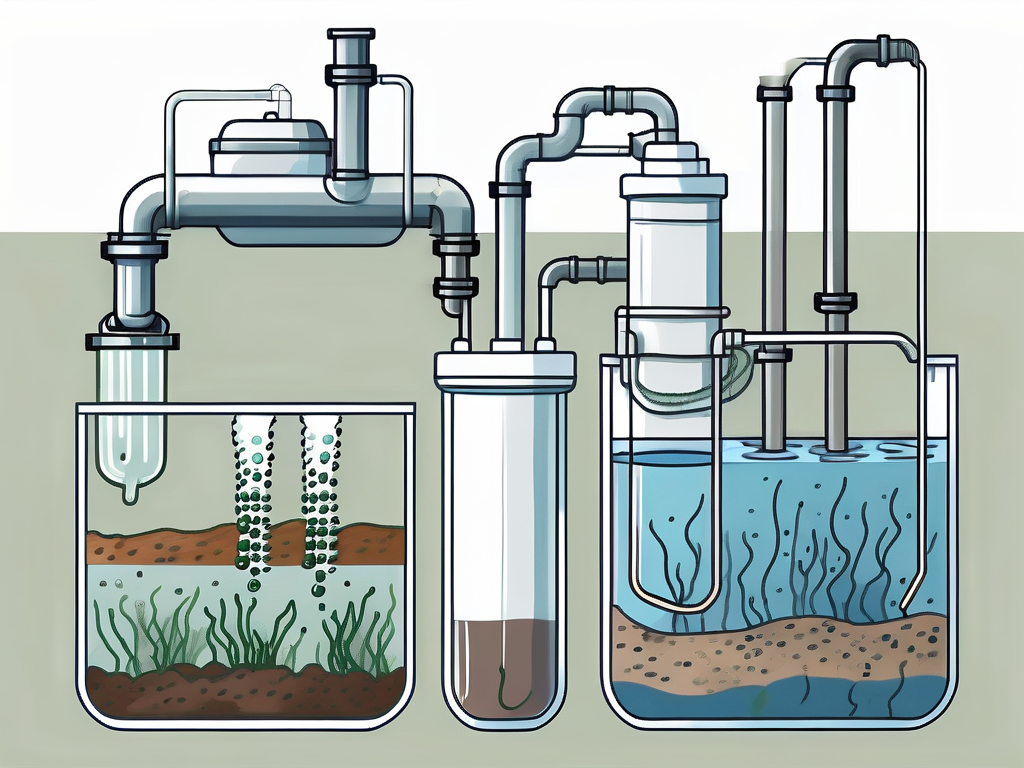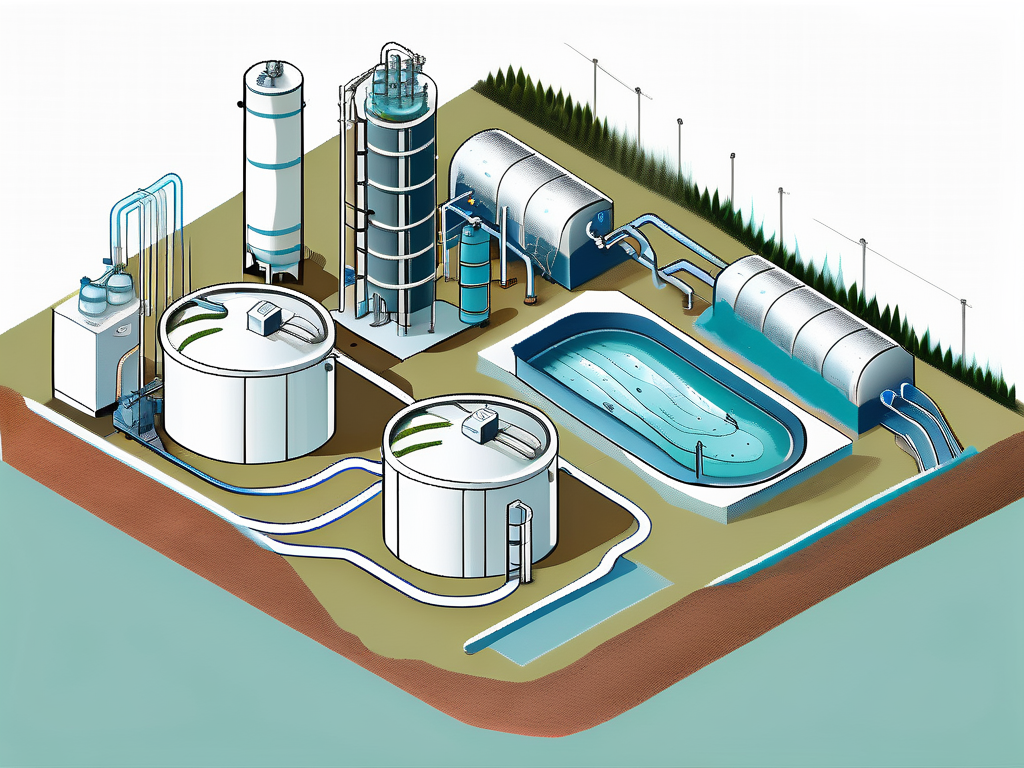
Influent: Wastewater Treatment Explained
Wastewater treatment is a crucial process in maintaining the health of our environment and ensuring the sustainability of our water resources. It involves the removal of contaminants from wastewater to produce an effluent that can be returned to the water cycle with minimal environmental impact. The term 'influent' is used to describe the untreated wastewater that enters a wastewater treatment plant. This article will provide an in-depth explanation of the influent and its role in the wastewater treatment process.
The treatment of wastewater is a complex process that requires a thorough understanding of the characteristics of the influent, the various treatment methods available, and the regulations governing the discharge of treated effluent. This article will delve into these aspects, providing a comprehensive understanding of the influent and its significance in wastewater treatment.
Characteristics of Influent
The characteristics of the influent are critical in determining the appropriate treatment methods and the efficiency of the treatment process. These characteristics can be physical, chemical, or biological in nature, and can vary significantly depending on the source of the wastewater.

Physical characteristics include temperature, color, odor, and solids content. Chemical characteristics include pH, biochemical oxygen demand (BOD), chemical oxygen demand (COD), nutrients (such as nitrogen and phosphorus), and various types of pollutants. Biological characteristics refer to the microorganisms present in the wastewater, including bacteria, viruses, and parasites.
Physical Characteristics
The physical characteristics of the influent are often the first indicators of the type and level of contamination. For example, a high temperature can indicate the presence of industrial wastewater, while a strong odor can suggest the presence of organic matter. The solids content, which includes both suspended and dissolved solids, is a key factor in the design of the treatment process.
Color is another important physical characteristic. Wastewater that is dark in color may contain high levels of organic matter or industrial pollutants. On the other hand, clear wastewater may indicate a lower level of contamination, but can still contain harmful microorganisms or chemicals that are not visible to the naked eye.
Chemical Characteristics
The chemical characteristics of the influent provide information about the types of pollutants present and their potential impact on the environment. The pH, for example, can affect the survival of aquatic life and the effectiveness of certain treatment processes. High levels of BOD and COD indicate a high organic load, which can lead to oxygen depletion in receiving waters.
Nutrients such as nitrogen and phosphorus can cause eutrophication, a process that leads to excessive growth of algae and other aquatic plants, which can disrupt the balance of aquatic ecosystems. The presence of heavy metals and other toxic substances can pose a serious threat to both human health and the environment.
Biological Characteristics
The biological characteristics of the influent are primarily concerned with the microorganisms present in the wastewater. These can include bacteria, viruses, and parasites, which can cause a variety of diseases in humans and animals. The presence of these pathogens is a major concern in wastewater treatment, and much of the treatment process is aimed at their removal or inactivation.
Other biological characteristics include the presence of algae and other aquatic plants, which can affect the oxygen balance in receiving waters, and the presence of organisms that can indicate the level of pollution, such as certain types of bacteria or invertebrates.
Treatment Methods
The treatment of wastewater involves several stages, each designed to remove or reduce certain types of contaminants. The specific treatment methods used depend on the characteristics of the influent and the quality requirements for the effluent.

Primary treatment involves the removal of large solids and grit, usually through screening and sedimentation. Secondary treatment involves biological processes to remove organic matter and nutrients, typically through activated sludge or trickling filter systems. Tertiary treatment, also known as advanced treatment, involves processes to remove specific pollutants, such as disinfection to kill pathogens, or filtration to remove fine solids.
Primary Treatment
Primary treatment is the first stage of the wastewater treatment process. It involves physical processes to remove large solids and grit from the influent. This is typically achieved through screening, where large objects are removed using a screen or grate, and sedimentation, where heavier particles settle to the bottom of a sedimentation tank.
The primary treatment process also includes the removal of oil and grease, which can interfere with subsequent treatment processes. This is usually done through a process called skimming, where the oil and grease are allowed to float to the surface of the water and are then removed.
Secondary Treatment
Secondary treatment is the next stage in the wastewater treatment process. It involves biological processes to remove organic matter and nutrients from the influent. The most common methods used are the activated sludge process and the trickling filter process.
The activated sludge process involves the use of microorganisms to break down organic matter and nutrients. The microorganisms are mixed with the influent in an aeration tank, where they consume the organic matter and nutrients, converting them into new cells, water, and carbon dioxide. The mixture is then allowed to settle, separating the treated water from the sludge, which is returned to the aeration tank to continue the process.
Tertiary Treatment
Tertiary treatment, also known as advanced treatment, involves processes to remove specific pollutants that were not removed during primary and secondary treatment. These can include disinfection to kill pathogens, filtration to remove fine solids, nutrient removal to prevent eutrophication, and advanced oxidation to remove trace organic contaminants.
Disinfection is typically achieved through the use of chlorine, ultraviolet light, or ozone. Filtration can be achieved through sand filters, membrane filters, or other types of filtration systems. Nutrient removal involves additional biological processes or chemical precipitation. Advanced oxidation involves the use of strong oxidants, such as ozone or hydrogen peroxide, in combination with ultraviolet light or a catalyst, to break down trace organic contaminants.
Regulations
The discharge of treated effluent is regulated by various laws and regulations, which set limits on the levels of certain pollutants that can be present in the effluent. These regulations are designed to protect the health of the environment and the public, and to ensure the sustainability of our water resources.
These regulations can vary significantly from one jurisdiction to another, and can cover a wide range of pollutants, including BOD, COD, nutrients, pathogens, heavy metals, and other toxic substances. Compliance with these regulations is a key aspect of wastewater treatment, and requires regular monitoring and testing of the effluent.
Monitoring and Testing
Monitoring and testing of the effluent is an essential part of the wastewater treatment process. It involves the collection and analysis of samples to determine the levels of various pollutants in the effluent. This information is used to assess the performance of the treatment process and to ensure compliance with discharge regulations.
Monitoring and testing can involve a variety of methods, including physical tests (such as temperature, color, and solids content), chemical tests (such as pH, BOD, and nutrient levels), and biological tests (such as pathogen counts). The frequency and scope of monitoring and testing can vary depending on the specific requirements of the discharge permit and the characteristics of the influent.
Discharge Permits
Discharge permits are legal documents that specify the conditions under which treated effluent can be discharged. They are issued by regulatory authorities and set limits on the levels of certain pollutants that can be present in the effluent. They also specify the monitoring and reporting requirements for the wastewater treatment plant.
Compliance with the conditions of the discharge permit is a legal requirement, and failure to comply can result in penalties, including fines and imprisonment. The permit also provides a mechanism for the regulatory authority to enforce the regulations and to take action in case of non-compliance.
Conclusion
The treatment of wastewater is a complex process that requires a thorough understanding of the characteristics of the influent, the various treatment methods available, and the regulations governing the discharge of treated effluent. The influent plays a critical role in this process, as its characteristics determine the treatment methods used and the efficiency of the treatment process.
By understanding the influent and its role in wastewater treatment, we can better manage our water resources and protect the health of our environment. This understanding is crucial in the face of increasing water scarcity and the growing demand for clean water.



